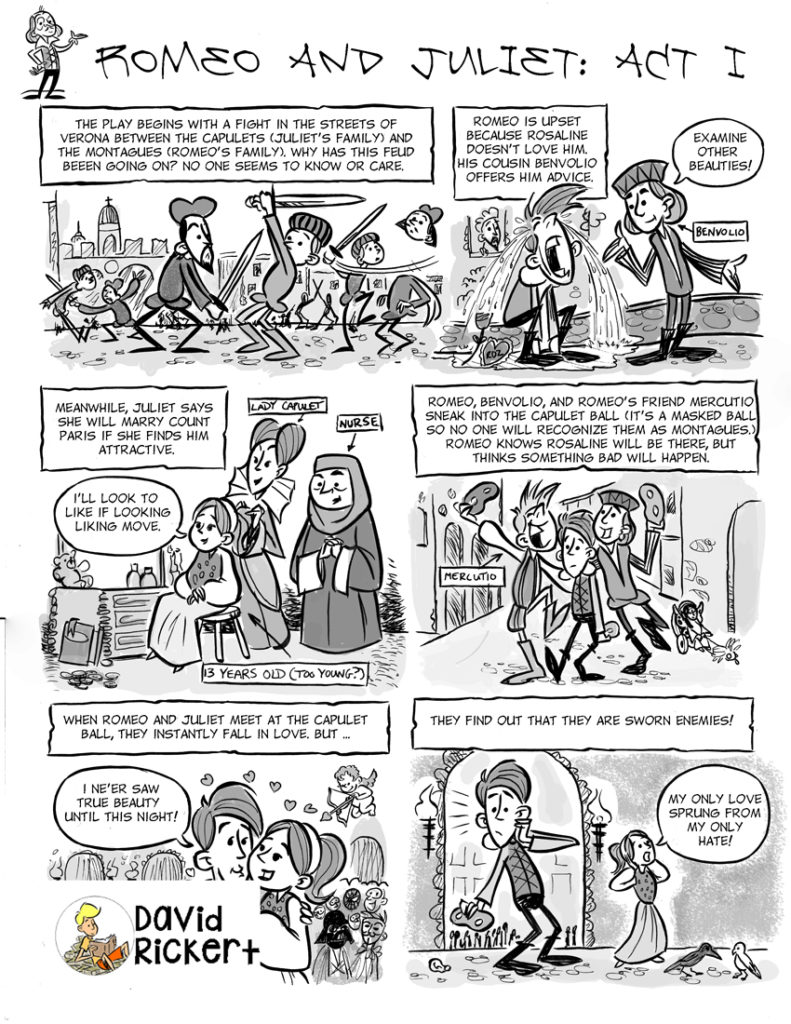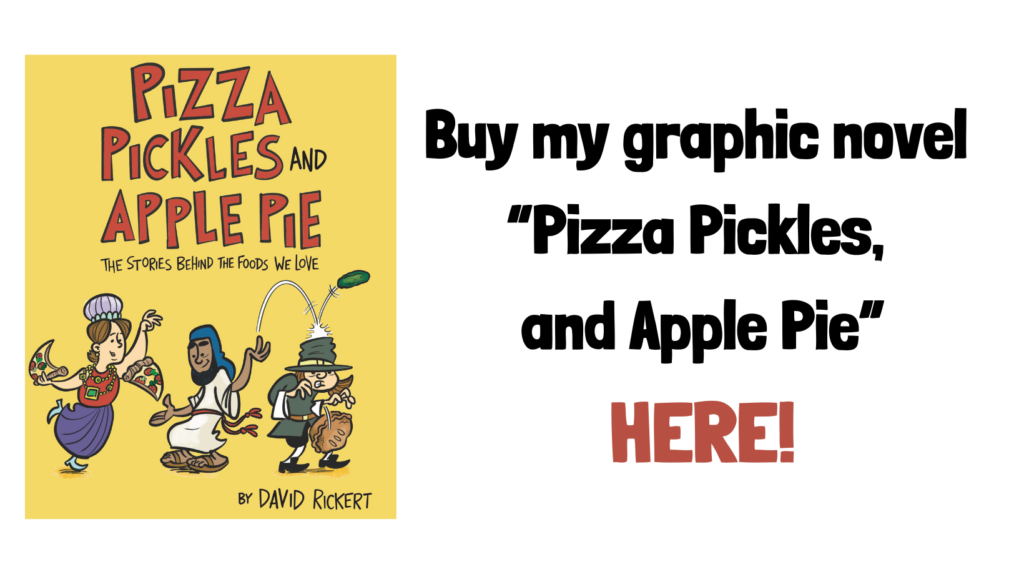
If you’re a high school English teacher, you’re probably teaching Shakespeare. You also know that it can be difficult to get kids interested in reading him before they even start. This happens for a couple of reasons:
- The word on the street is that Shakespeare is difficult. It will probably be the hardest thing they’ll read all year.
- He’s a dead white guy that might not have anything to say to kids these days.
- Shakespeare doesn’t look like the books that students are likely to read, so his plays don’t feel familiar.
- Teachers geek out on Shakespeare so much that student think they are really weird and flaky (this might just be a me problem.)
Of course we know all the tricks: pull the plastic swords out of the closet, get kids moving, play around with the text, draw connections between Shakespeare and rap.
But when it comes to working more directly with the text there’s a perfect solution: comics.
Shakespeare Comics


Shakespeare Comics are visual guides to the play. Each play is summarized in fun, visually appealing comics that allow your students to understand the play. There are sets for Romeo and Juliet, Julius Caesar, Hamlet, Macbeth, A Midsummer Night’s Dream, and Othello.
Each act is summarized through one-page comics with clever illustrations that bring the story to life in fun, engaging comics. They use Shakespeare’s original language as dialogue – no summaries. And there are hidden images in the form of Easter eggs that students can look for – images from the play that are strategically hidden in the panels themselves.
In addtion, use the accompanying activities in your lesson plans to get kids involved with the text through warm-up activities, close reads, or creative expression.
Why Shakespeare Comics?
- 90% of the information processed by the brain is visual.
- Comics dramatically increase the retention of material.
- They also aid in the understanding of difficult material.
- They serve the needs of visual learners and provide new opportunities for those with learning differences while benefiting all learners.
- They’re fun!
How Can I Use These Comics?
- As a quick overview of each act. They are better than online summaries that go into too much detail or give too much away.
- Furthermore, they offer support with the actual text instead of translated versions like SparkNotes.
- An aid for struggling readers.
- A review for each act to make sure that every student has understood the material.AA
- A catch-up for absent students.
- Coloring pages (students love this, and it decreases their stress).
- As a fun way to approach the Bard.
- Anything else you can think of!
What Teachers are Saying:
“Your cartoons have been such a help to my visual learners, and I love the warm-up activities associated with each act. We have enjoyed them, and I will use these for years to come!”
“My kids absolutely loved these, especially finding the funny images or easter eggs thrown in. Thanks!”
A lot of students can use whatever help they can get understanding Shakespeare, so I’ve developed comics and activities for a few frequently taught plays, like Romeo and Juliet, Macbeth, A Midsummer Night’s Dream, and Hamlet and more!
Many teachers have found them valuable for comprehension, plus they’re fun! Who doesn’t love comics?
If you’d like a free Introduction to Shakespeare activity, click the box below:
More Shakespeare posts you might enjoy:






